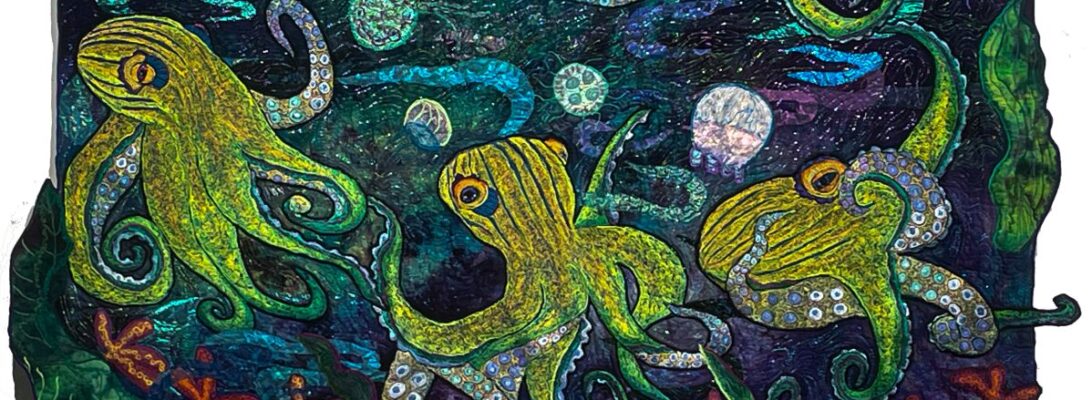
One of the things that’s hard about a circular image is that it doesn’t move very easily. As a design. Circles lie like a lump unless you put them in a row or on a path.
I love this octopus in a shell, but it was static. There are several ways to create motion in a piece. Creating a visual path with rocks or shells would have worked. But I wanted something showier.
The best piece of fabric I had was a half-yard of blue hand-dye. But the shell didn’t fill it up. I could cut it to fit the shell. But a square wouldn’t work
So I decided to make a frame. But a rectangle was no better. There’s nothing square about an octopus. They flow with the ocean tide. They exude curves.
So if I wasn’t going to put the octopus in a rectangle or a square of some kind.
I needed to apply a different aesthetic. When you need design help, go look at great art. They knew what they were doing.
I’m a huge fan of Art Nouveau.
“Art Nouveau is …known for its flowing, organic shapes, curved lines, and reliance on natural motifs like flowers and plants. The movement aimed to unify all artistic disciplines, creating a holistic design experience.” Wikipedia
Art Nouveau has always made my heart beat faster. Natural organic forms that flow in movement, are based on the oriental concept of the visual path and movement make perfect sense to me.
I hadn’t seen an Art Nouveau octopus before. Japanese art is full of them. But tentacles would make a marvelous frame.
One thing about octopuses is that you don’t always see all of them. They hide, they move, they twist in the water. They don’t stay in one place while you take their picture. So I made three tentacles of another octopus, encircling the one in the shell.
Besides, the tentacles interact with the rest of the water and the jellyfish.








This is all pinned up and ready to stitch. I hope none of it splashes into the studio.
Not every frame is a box. A frame centers your design, accentuates it, and interacts with it. It is there to put the subject in the center of attention. Who says you have to be square?
















